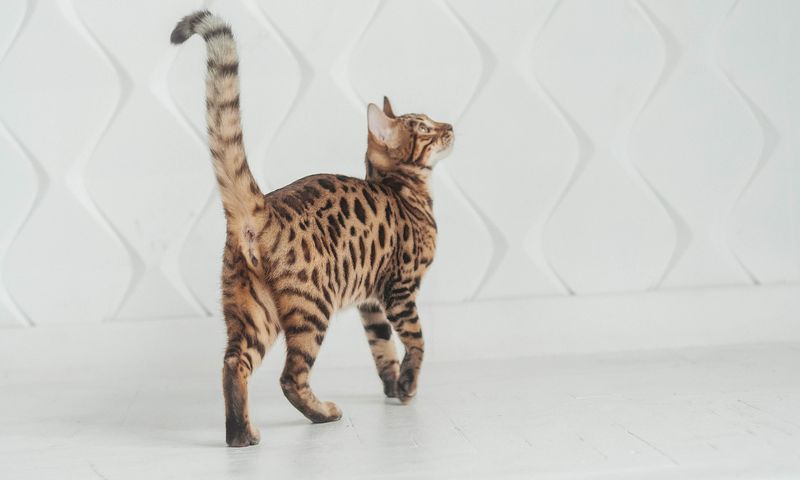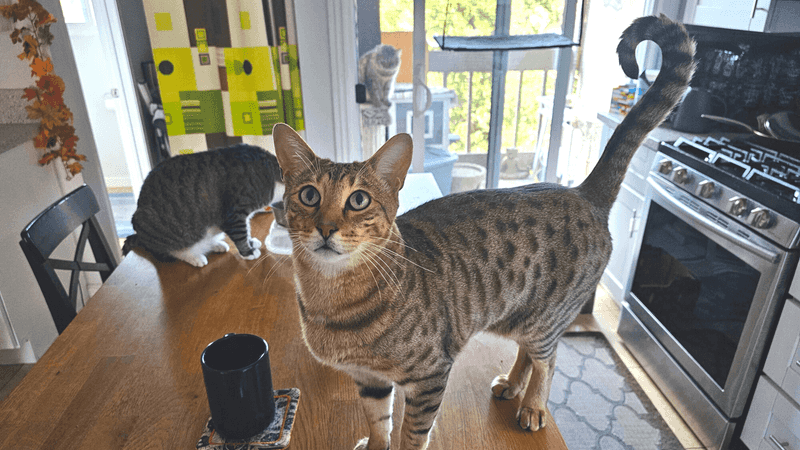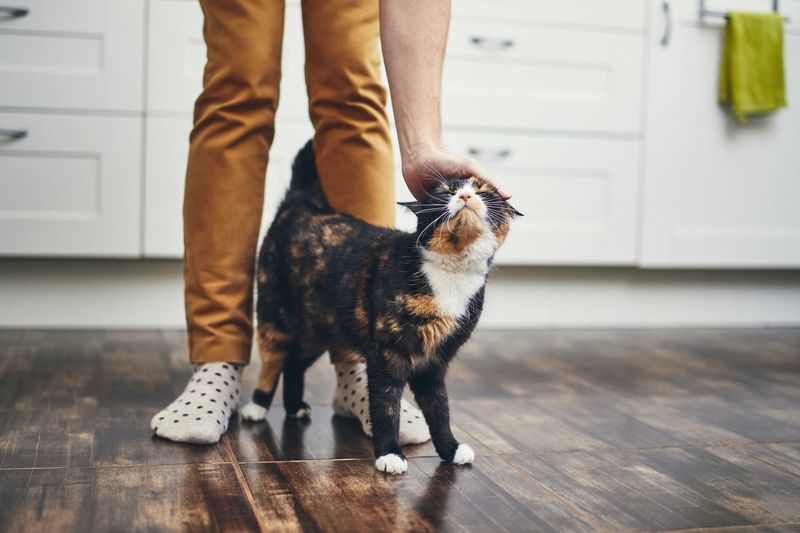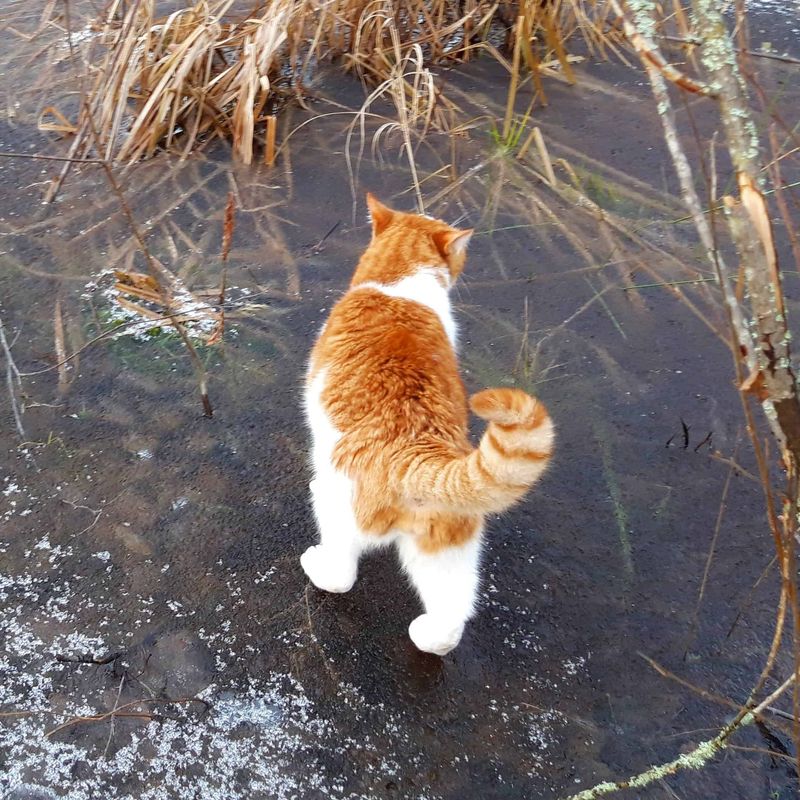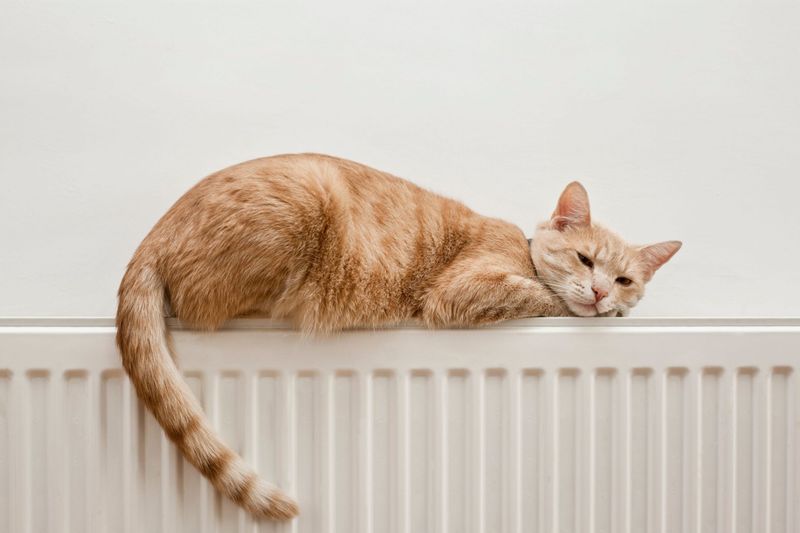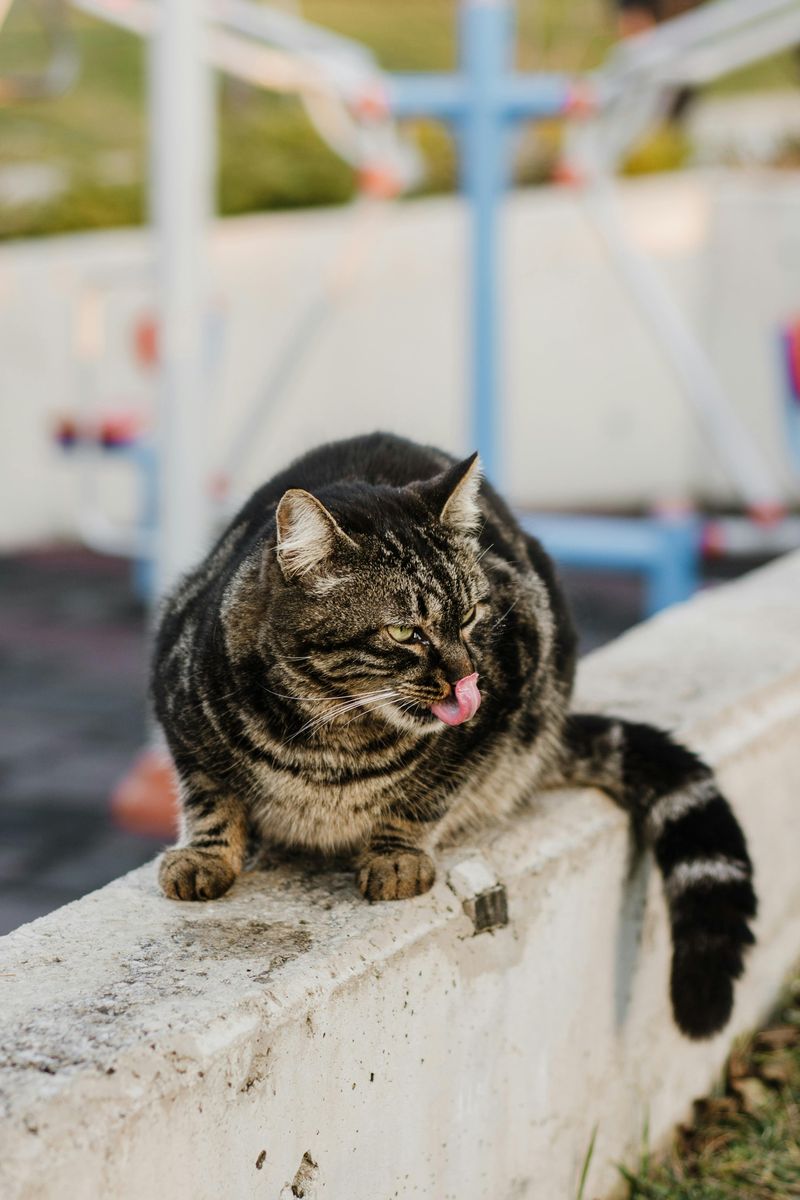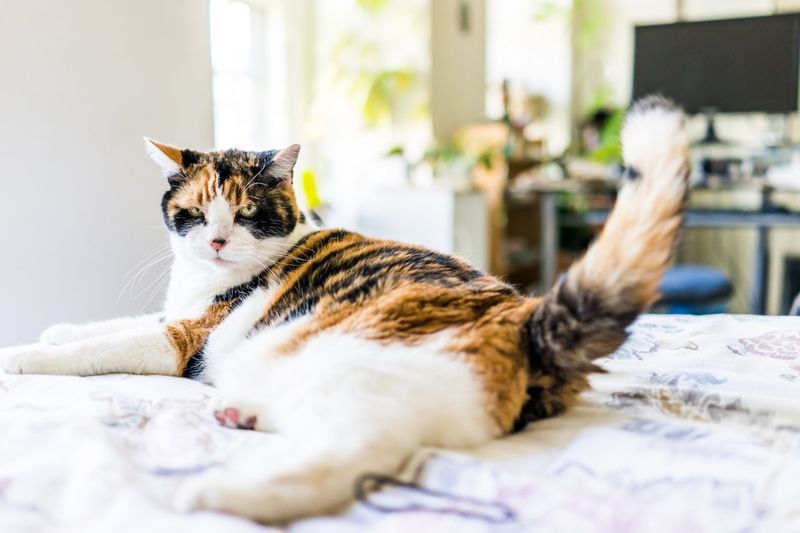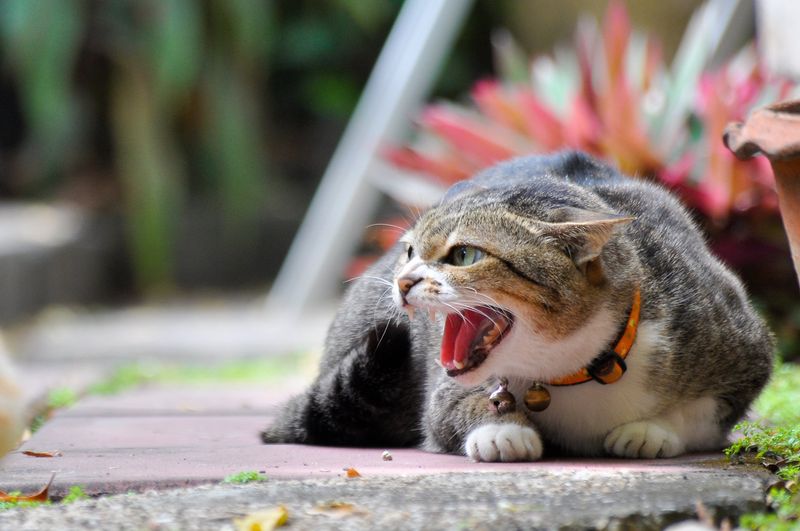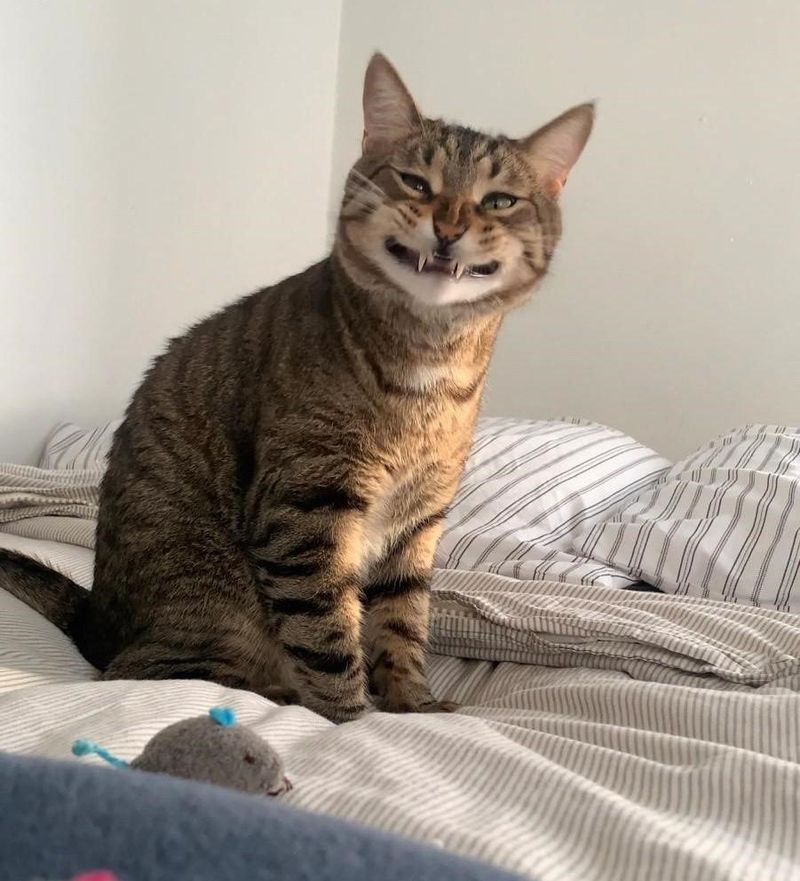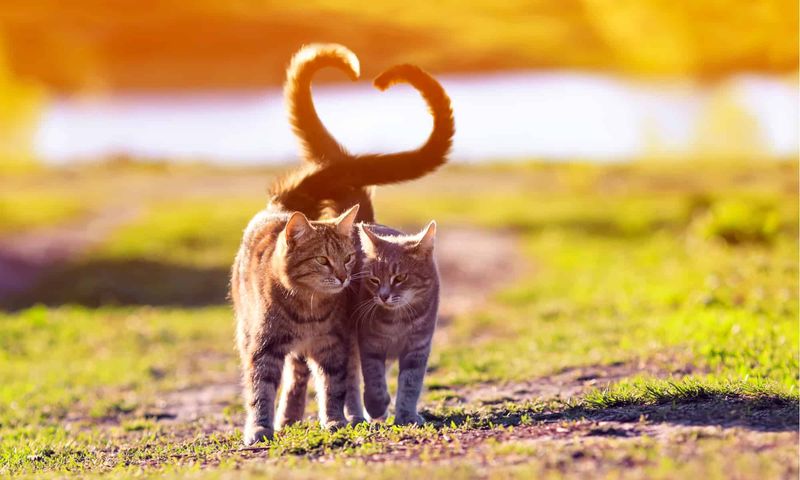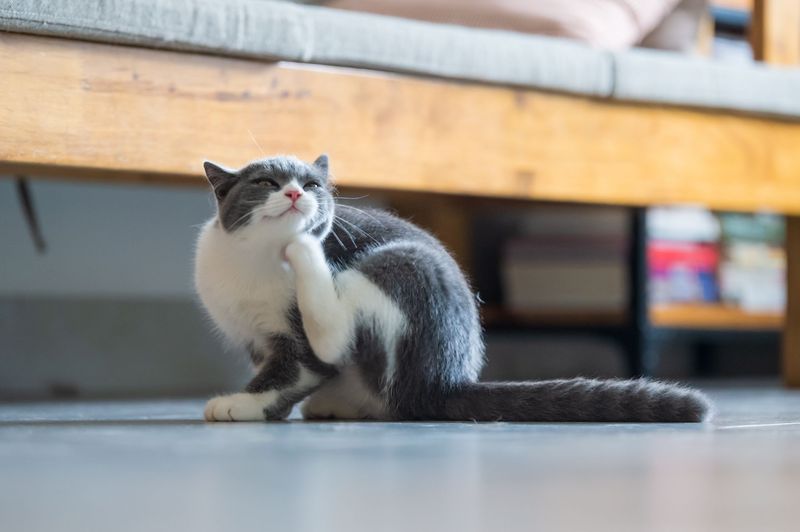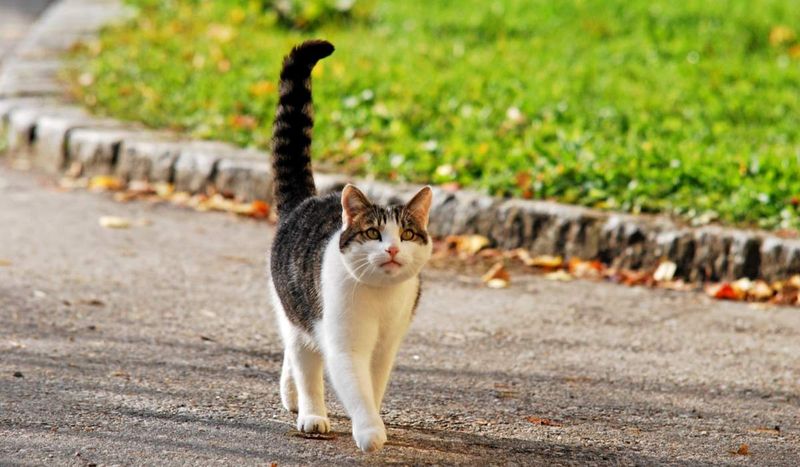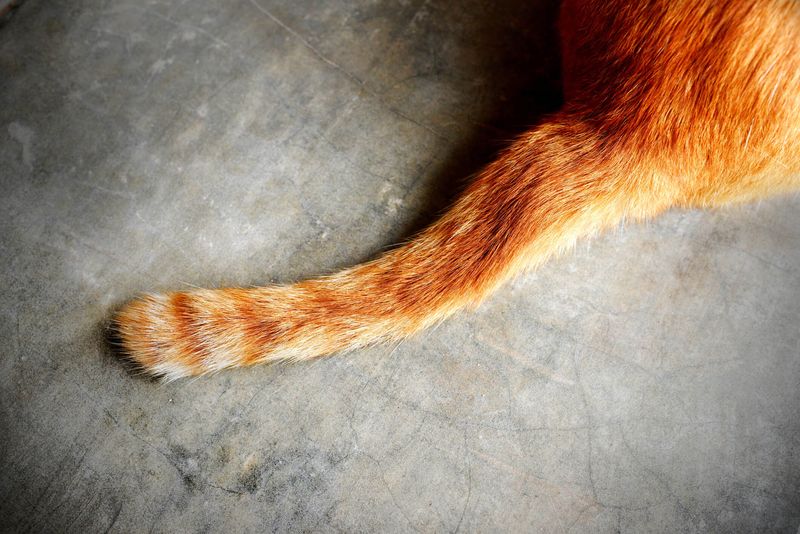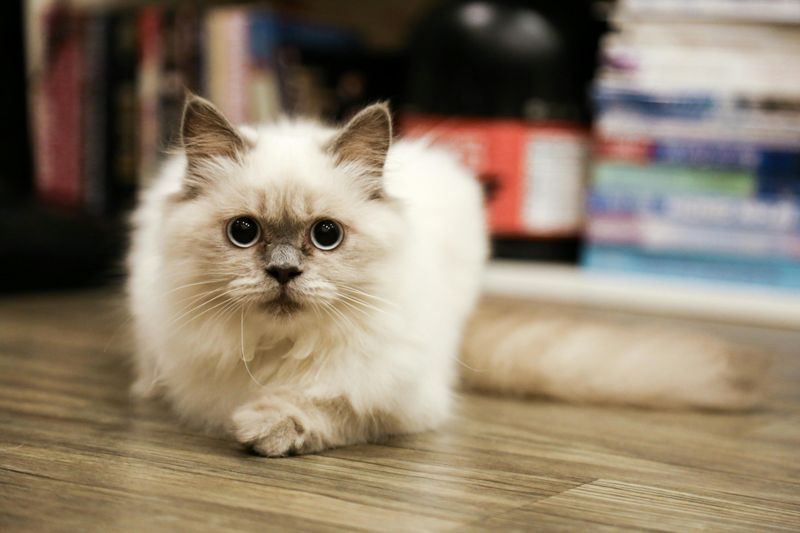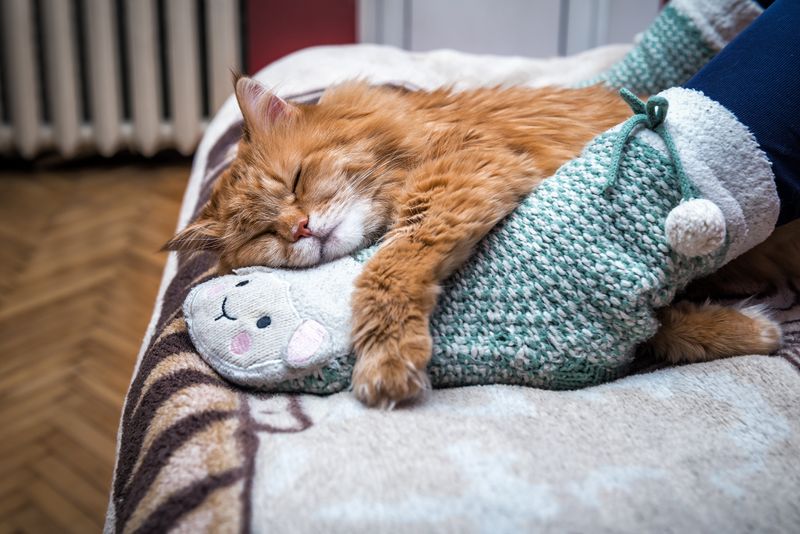📖 Table of Content:
- 1. High, Straight-Up Tail – Confidence & Happiness
- 2. Hooked or Question Mark-Shaped Tail – Playfulness
- 3. Tail Wrapped Around You – Affection & Bonding
- 4. Puffed-Up Tail – Fear or Startled Reaction
- 5. Low or Tucked Tail – Fear, Submission, or Anxiety
- 6. Slowly Swaying Tail – Focused & Curious
- 7. Fast, Whipping Tail – Annoyance or Irritation
- 8. Tail Flicking Back & Forth – Agitation
- 9. Quivering Tail (When Standing Up) – Excitement or Marking Behavior
- 10. Tail Wrapped Around Another Cat – Friendship & Trust
- 11. Twitching Tail Tip – Mild Irritation or Thoughtfulness
- 12. Straight Tail with a Twitch – Extreme Excitement
- 13. Tail Dragging or Limp – Illness or Injury
- 14. Swishing Tail While Lying Down – Mild Irritation or Playfulness
- 15. Tapping Tail While Sleeping – Relaxation or Dreaming
From subtle twitches to bold, sweeping motions, each tail movement conveys a message about their emotions and state of mind. Unlike vocalizations, which can vary in meaning, tail signals are often more consistent, making them a reliable indicator of how a cat is feeling.
By paying close attention to their tail language, you can gain valuable insights into your cat’s mood and intentions. A high, upright tail often signifies confidence and happiness, while a puffed-up tail indicates fear or aggression. Recognizing these signals can help you respond appropriately, whether that means offering comfort, giving them space, or engaging in play.
Understanding your cat’s tail movements strengthens your bond and creates a more harmonious relationship. When you can interpret their signals correctly, you become more in tune with their needs, reducing misunderstandings and stress. By learning this form of feline communication, you can ensure your cat feels safe, understood, and loved.
1. High, Straight-Up Tail – Confidence & Happiness
When a cat holds its tail high and straight up, it’s a sign of confidence and happiness. This posture indicates the cat is feeling secure in its environment. Cats often display this tail position when greeting their owners or exploring new spaces. A high tail can also mean the cat is in a playful mood, inviting interaction. It’s a positive sign that your cat is comfortable. If you notice your cat approaching you with its tail in this position, it’s a perfect time for a gentle petting session or playtime, reaffirming your bond.
2. Hooked or Question Mark-Shaped Tail – Playfulness
A hooked or question mark-shaped tail often indicates playfulness in cats. This tail position shows the cat is curious and ready for fun. It’s common to see this when the cat is about to pounce or engage in a playful chase. This posture is inviting and suggests the cat is open to interaction. You might want to grab a toy and join in the fun. Observing this tail shape can be a cue to engage in a game that stimulates your cat’s hunting instincts, strengthening your connection and providing mental stimulation.
3. Tail Wrapped Around You – Affection & Bonding
This behavior is akin to a human hug and signifies trust. Cats often do this when they feel secure and connected to their human companions. This interaction is an expression of closeness and is a wonderful opportunity to reinforce the bond with your cat. Responding with gentle strokes or soft words can enhance the feeling of trust. Recognizing and reciprocating this gesture can lead to a stronger relationship with your feline friend, making them feel loved and valued.
4. Puffed-Up Tail – Fear or Startled Reaction
A puffed-up tail is a clear indication of fear or a startled reaction. This dramatic change in tail appearance is a defensive mechanism, making the cat appear larger to potential threats. It’s a common reaction when a cat is surprised or feels threatened. If you observe this tail position, it’s important to provide a calming environment. Avoid sudden movements or loud noises. Offering a safe space for your cat to retreat can help them relax. Understanding this signal can prevent stress and help you maintain a peaceful environment for your pet.
5. Low or Tucked Tail – Fear, Submission, or Anxiety
A low or tucked tail is a defensive posture, suggesting the cat might need reassurance or space. Approach with care if you notice this tail position, offering a calm and gentle presence. Try to identify and minimize any stressors in the environment. Patience and understanding can help the cat feel more secure, gradually encouraging them to relax and open up. Recognizing this sign can enhance your ability to provide a supportive environment.
6. Slowly Swaying Tail – Focused & Curious
This tail movement is common when a cat is observing something intriguing, such as a moving object or another animal. It signifies that the cat’s attention is fully engaged. This kind of behavior suggests readiness to interact or investigate further. You might observe this when your cat is about to pounce on a toy or investigate a new environment. Encouraging this behavior with stimulating activities can be beneficial, as it engages your cat’s natural instincts and keeps them mentally active.
7. Fast, Whipping Tail – Annoyance or Irritation
A fast, whipping tail is a sign of annoyance or irritation in cats. This abrupt movement indicates that the cat is feeling impatient or bothered by something in its environment. It’s a clear sign to give the cat some space. If you notice this tail behavior, it’s best to avoid further interaction until the cat calms down. This signal serves as a warning that the cat needs time to settle. Understanding this sign can help you respect your cat’s boundaries, preventing potential stress or conflict and maintaining a harmonious relationship.
8. Tail Flicking Back & Forth – Agitation
Cats may display this movement when experiencing conflicting emotions or uncertainty about their next action. The motion suggests they are processing something frustrating or confusing in their environment. Noticing this behavior serves as a cue to evaluate the surroundings and ensure the cat feels comfortable. A calm and quiet space can help ease feelings of irritation or stress. Addressing the source of discomfort allows your feline companion to relax, promoting a sense of security and well-being.
9. Quivering Tail (When Standing Up) – Excitement or Marking Behavior
If you see this behavior, it often means something positive is happening, like a favorite person coming home. It’s a sign of joy and territorial pride. Engaging positively with your cat during this time, such as giving them attention or treats, can reinforce their happy mood, fostering a joyful environment.
10. Tail Wrapped Around Another Cat – Friendship & Trust
When a cat wraps its tail around another cat, it’s a symbol of friendship and trust. This gesture is akin to a human arm around a friend, indicating a strong bond between them. It’s a common sight among cats that have grown up together or share a close relationship. Observing this behavior is a reminder of the importance of companionship for cats, who often thrive with a feline friend. Supporting these interactions can promote a harmonious household. By encouraging these bonds, you can enhance your cats’ emotional well-being.
11. Twitching Tail Tip – Mild Irritation or Thoughtfulness
This subtle movement is often seen when a cat is contemplating its next move or is slightly annoyed by something minor. This behavior is a cue that the cat is processing information. Providing toys or activities can stimulate their curiosity, helping to channel their thoughts productively. Recognizing this signal allows you to engage with your cat appropriately, ensuring they remain mentally active and content. It’s a gentle reminder to be mindful of your cat’s cognitive needs and environment.
12. Straight Tail with a Twitch – Extreme Excitement
A straight tail with a twitch often signifies extreme excitement. This tail position and movement can occur during moments of high anticipation, such as when a cat is about to receive a treat or engage in playtime. This behavior reflects a high level of enthusiasm and eagerness. Engaging with your cat during these moments can enhance their excitement, making it a delightful experience for both of you. By understanding this signal, you can create joyful interactions and strengthen your bond, ensuring your cat feels happy and stimulated.
13. Tail Dragging or Limp – Illness or Injury
The lack of tail movement often points to underlying health issues that require immediate attention. It can result from trauma or neurological problems. If you observe this tail condition, it’s crucial to consult a veterinarian promptly. Early intervention can prevent serious complications and promote recovery. Recognizing this sign emphasizes the importance of regular health checks and being attentive to any changes in your cat’s normal behavior, ensuring their continued health and well-being.
14. Swishing Tail While Lying Down – Mild Irritation or Playfulness
When a cat swishes its tail while lying down, it can indicate mild irritation or playfulness. This duality in meaning depends on the cat’s overall demeanor and the context of the situation. If the cat appears relaxed, it might be gearing up for playful interaction. Conversely, if the cat seems tense, it could signal mild annoyance. Understanding the difference requires observing the entire body language. Responding appropriately to this tail movement can lead to enjoyable play or provide the space the cat needs, enhancing your relationship.
15. Tapping Tail While Sleeping – Relaxation or Dreaming
A tapping tail while sleeping is usually a sign of relaxation or dreaming. This gentle tail movement suggests the cat is in a deep sleep phase, possibly dreaming about recent activities or favorite pastimes. This behavior is harmless and indicates that your cat feels safe and comfortable in their environment. Observing your cat in this state is a positive sign of contentment. Ensuring a quiet and cozy sleeping area can support these restful moments, contributing to your cat’s overall happiness. It’s a reminder of the importance of a peaceful home environment.

